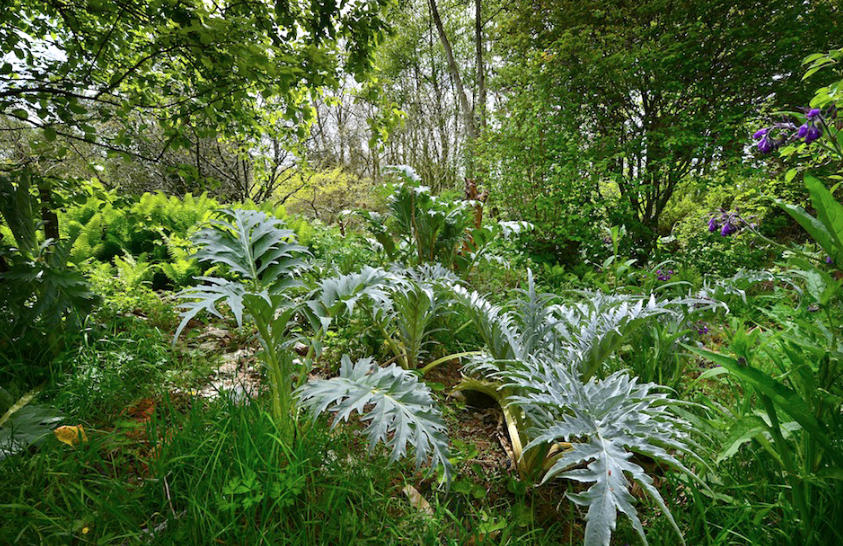
After having pushed back the forests to protect us from predators and cultivate in peace, we are witnessing a reversal of the phenomenon…now, with agroforestry, we are replanting the forests to associate them with our crops. And the results are without appeal! In fact, trees contribute more than you might think to the balance of the ecosystems that feed us, even in our gardens!
Agroforestry in agriculture
INRA experiments in Herault have shown that an agroforestry plot produced as much biomass as a larger plot, with a result 36% higher on average. Indeed, thanks to a staggering of crops, root systems and permanent soil occupation light, water and nutrients are taken up more efficiently by plants.
This system is not revolutionary, it only takes into account the complementarities naturally present in nature. For example, trees bring up water and minerals from deep soils. These are then made available to surface crops. What is more, each year 40% of the biomass of the trees returns to the soil…which has the effect of a constant enrichment in organic matter…participating directly in the biological activity of a soil already well structured by the roots. These roots also have the particularity of increasing the water reserves of the soil that can be used by neighboring plants. The additional layering of the strata recreates a microclimate reducing water and thermal stress…ideal…in these times troubled by global warming.
Today the techniques are evolving, far from the time of monospecific alignments of trees in the middle of crops. The aim is to promote the diversity of species and types of development.
For example: Multi-specific plantations / enhancement of the existing border and open field / natural regeneration / restoration of pollard trees, introduction of strips of linear coppice
Agroforestry in the garden: the garden-forest
More and more, we are witnessing a return of the forest to sensitivities. On the same principle as agroforestry, this type of garden draws its strength and its autonomy in terms of watering and amendment from the complementarity of the different strata that compose it. A principle that can be found in the ancestral practices of the inhabitants of tropical and semi-tropical forests… whose food gardens produce vegetables, fruits and wood at the same time. The forest garden is organized in 7 layers. Plant companies, in different strata, will therefore meet in the same places, without creating negative competition.
Stratum 1: trees (black alder, acacia, radiata pine, etc.)
Stratum 2: small trees (hazel trees, apple trees, etc.)
Layer 3: shrubs (blackcurrant, currant, raspberry, white mulberry, etc.)
Layer 4: herbaceous
Layer 5: roots (carrots, beets, etc.)
Layer 6: ground cover (strawberries, mint, etc.)
Layer 7: climbers (honeysuckle, vine, etc.)
The garden-forest is part of the long term, and is structured around a central element: the tree.
Its size and conduct is of major importance. Under the crown care should be taken to remove all lower branches of taller trees.
The choice of plants will be of paramount importance. It will be necessary to take care of the good associations, indeed certain species stimulate each other and others kill each other… we speak of plant guild. A rule says that a fruit tree is accompanied by three companion shrubs. Controlling shade and light, depending on the plants selected, will be of paramount importance to promote good plant harmony. The intelligent design of the garden-forest will considerably reduce the maintenance required. Sheltering wildlife is also part of the components… shelters for auxiliaries in particular.
A detailed knowledge of ecosystems and plant dynamics is necessary for good results. But it is an exciting science that has its own vocabulary and its own aesthetic!
To read: La forêt-jardin Paperback – October 26, 2017 – by Martin Crawford (Author), Rob Hopkins (Preface), Charles Herve-gruyer (Preface) published by ULMER
